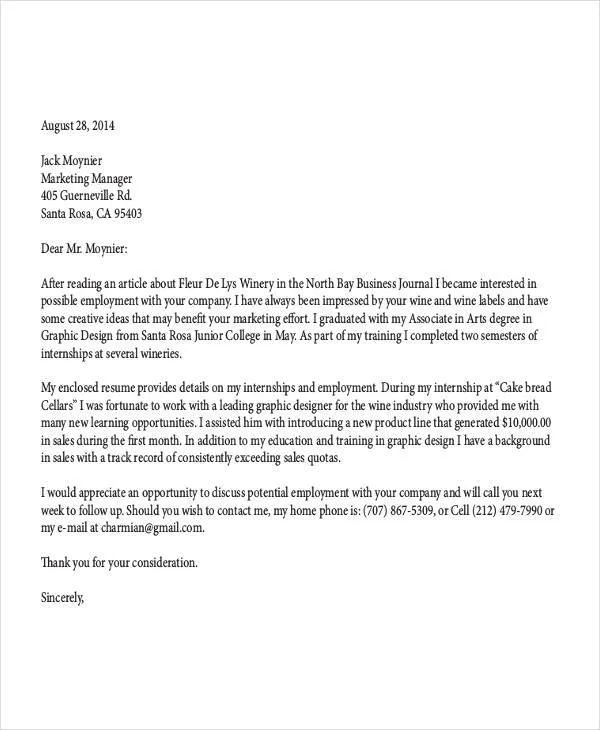What is a Cover Letter Introduction?
The cover letter introduction is the opening paragraph of your cover letter, and it serves as your first opportunity to make a strong impression on a potential employer. It’s a crucial part of your application package, acting as a snapshot of your qualifications and your enthusiasm for the role. This brief section sets the tone for the rest of the letter and provides the hiring manager with a compelling reason to keep reading. It’s not merely a formality; it’s a strategic element designed to capture attention and demonstrate your suitability for the position. A well-crafted introduction can significantly increase your chances of getting your foot in the door and securing an interview. Remember that every detail matters, and the introduction is your first chance to showcase your professional brand.
Why is the Cover Letter Introduction Important?
The cover letter introduction is a pivotal moment in your job application, as it’s the first thing a hiring manager will see. It’s your initial chance to make a positive impression and convince the reader that you’re a strong candidate. A captivating introduction immediately grabs the reader’s attention, setting the stage for the rest of your letter. It shows that you understand the role and the company, demonstrating your genuine interest. Furthermore, it allows you to highlight your most relevant skills and experiences, aligning them with the job requirements. In a sea of applications, a well-written introduction helps you stand out from the crowd. Ultimately, it can significantly influence whether your application moves to the next stage of the hiring process. A strong intro sets the expectation for a high-quality application overall.
The Goal of a Cover Letter Introduction
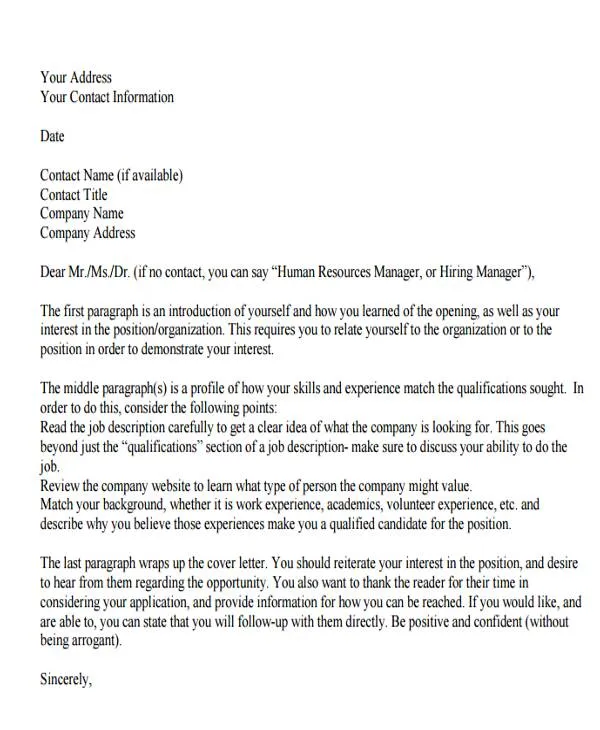
The primary goal of your cover letter introduction is to grab the reader’s attention and encourage them to continue reading. You want to immediately establish your value proposition, demonstrating what you bring to the table and why you’re a great fit for the role. The introduction should convey your enthusiasm for the position and the company. It needs to be concise, yet impactful, providing a snapshot of your key qualifications. The main objective is to persuade the hiring manager to delve deeper into your application, learning more about your skills, experience, and how you can contribute to the company’s success. A successful introduction sets the tone for a positive and engaging narrative, increasing your chances of securing an interview and ultimately, the job.
Key Elements of a Strong Cover Letter Introduction
A strong cover letter introduction contains several key elements. First, it should clearly state the position you are applying for and where you found the job posting. Then, it should express your enthusiasm for the role and the company. Be sure to briefly mention your most relevant skills and experiences, aligning them with the job requirements. If possible, include a brief statement about why you’re excited about this specific opportunity and what makes you a good fit. Finally, it should be concise and engaging, capturing the reader’s attention from the start. A well-structured introduction will make the hiring manager eager to read the rest of your application and learn more about your qualifications. A powerful introduction sets a positive tone for the entire application and highlights your value.
Highlighting Your Interest
Expressing genuine interest is a crucial element of a cover letter introduction. Begin by stating the position you are applying for and where you discovered the opportunity. Go beyond the basics and show your enthusiasm for the company’s mission, values, or recent achievements. You can mention something specific that drew your attention to the role or the organization. Demonstrate that you have researched the company and understand its goals. Mention how your skills and experience align with the company’s needs. Avoid generic statements, instead, showcase your genuine interest in contributing to the team. By expressing your genuine interest you create a more compelling narrative that sets you apart from other applicants and makes the hiring manager more engaged.
Showcasing Your Key Skills and Experiences
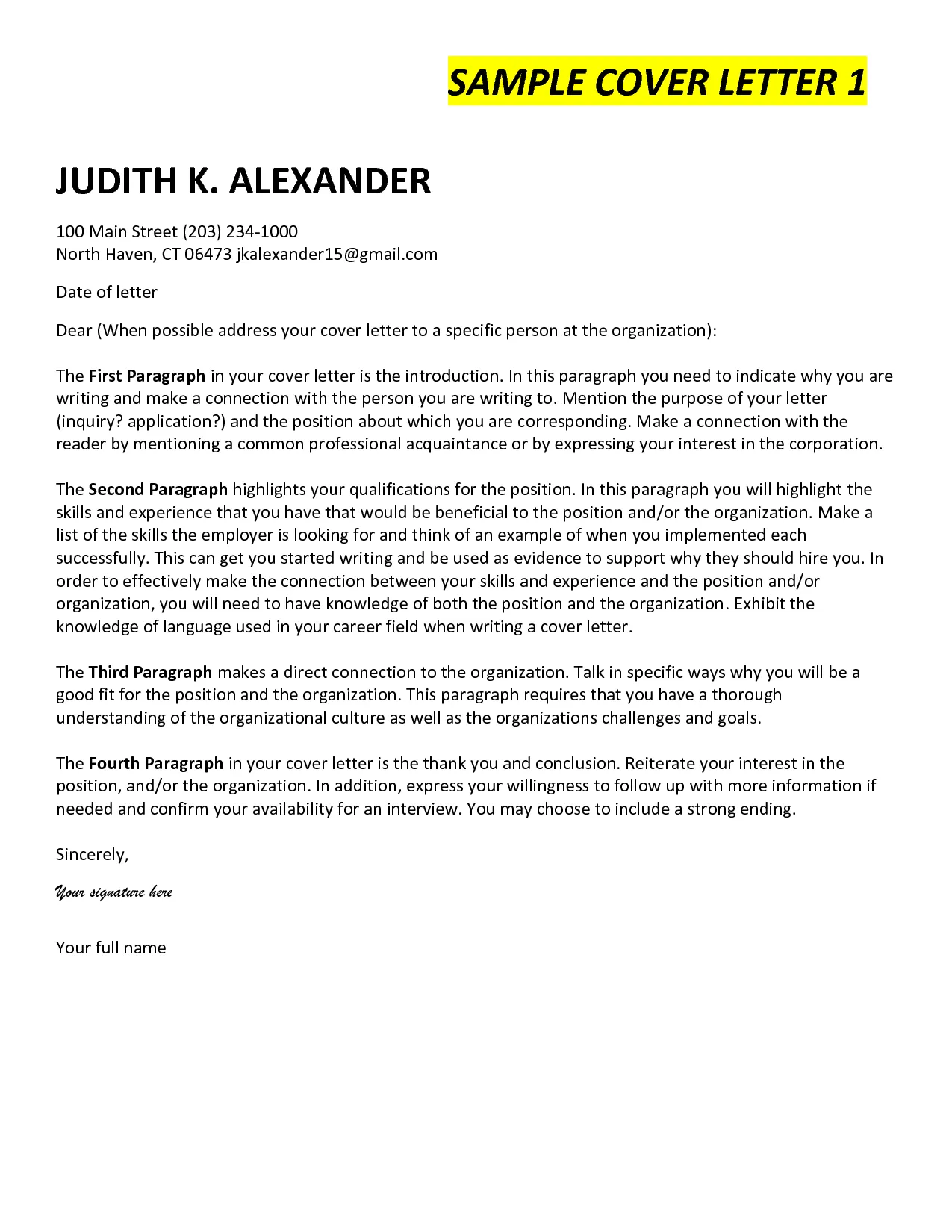
Your cover letter introduction is a prime opportunity to showcase your most relevant skills and experiences. Focus on the abilities and qualifications that align with the job description’s requirements. Identify the key skills and experiences that the employer is seeking and then briefly mention how you have demonstrated these in your past roles. Quantify your accomplishments whenever possible, using numbers or specific examples to highlight your achievements. Keep the focus on what makes you a strong fit for the position. Tailor your introduction to match the job requirements rather than including a generic list of your skills. This ensures that your introduction immediately demonstrates your value to the hiring manager. Using the right keywords from the job description is a great way to capture the reader’s attention.
Tailoring Your Introduction
Customizing your cover letter introduction for each job application is essential for demonstrating genuine interest and showcasing your suitability for the role. Avoid using a generic introduction that can be used for multiple applications. Instead, personalize your introduction by referencing the specific company, the hiring manager (if known), or the role’s specific requirements. Show you have researched the company and understand its mission, values, or recent achievements. Highlight how your unique skills and experiences align with the job description. Tailoring your introduction demonstrates your commitment and attention to detail. This personal touch makes you more memorable to the hiring manager. It greatly increases your chances of being considered for an interview. A customized introduction shows you put effort into your application.
Researching the Company
Thorough company research is a cornerstone of a successful cover letter introduction. Before writing, visit the company’s website, explore their social media profiles, and read recent news or articles about the organization. Understanding the company’s mission, values, products, services, and recent achievements provides a foundation for a tailored introduction. Identify the company’s key goals and challenges to see how your skills and experience align with their needs. Demonstrate your interest in the company by mentioning specific projects or initiatives that resonate with you. The goal is to show the hiring manager that you understand the company’s culture and are a good fit. Your research will also help you to use the right keywords from the job description. This level of preparation shows your dedication and increases your chances of making a strong impression.
Using Keywords from the Job Description
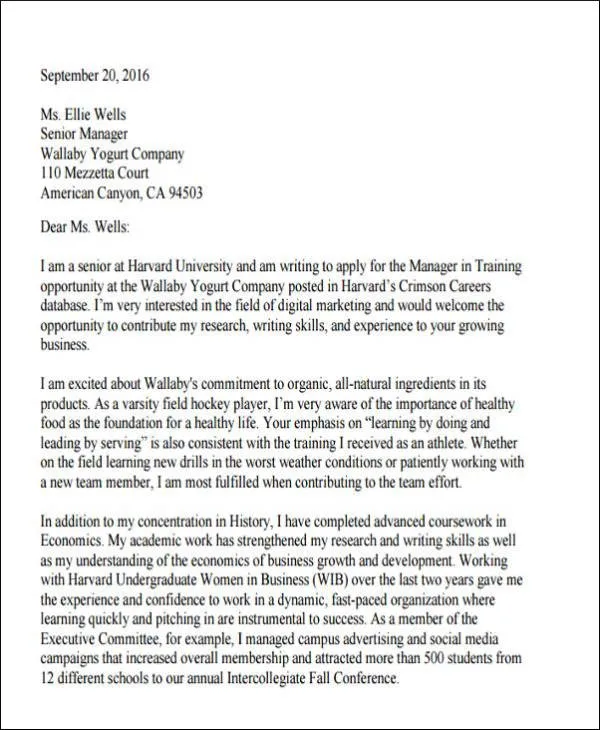
Incorporating keywords from the job description is a smart strategy to capture the hiring manager’s attention and improve your application’s visibility. Carefully review the job description and identify key skills, qualifications, and requirements. Integrate these keywords naturally into your cover letter introduction. Use these terms when describing your skills and experiences. Ensure the keywords are used in context to showcase your understanding of the role and the company. This targeted approach not only highlights your relevance to the position but also helps applicant tracking systems (ATS) identify your application. It demonstrates that you have taken the time to understand the job requirements and are a strong fit. However, avoid keyword stuffing; instead, use keywords organically to enhance the clarity and effectiveness of your introduction.
Cover Letter Introduction Samples to Inspire You
Analyzing effective cover letter introduction samples can provide valuable insights into crafting your own compelling introduction. Studying well-written examples allows you to observe how to express interest, showcase skills, and align with job requirements. Look for samples that are tailored to different industries, job titles, and experience levels. Pay attention to the language, tone, and structure used in the samples. Focus on how the applicants express their enthusiasm and emphasize their qualifications. These samples help you identify best practices and generate ideas for your introduction. You can adapt them to create an introduction that reflects your unique background and professional goals. By drawing inspiration from various samples, you can ensure your introduction is concise, impactful, and tailored to the specific opportunity.
Sample Introduction for a Recent Graduate
As a recent graduate, your introduction is an opportunity to highlight your skills and enthusiasm for a new professional journey. Focus on your academic achievements, relevant coursework, internships, or volunteer experiences. Mention the specific skills you acquired during your studies and how they align with the job requirements. Demonstrate your eagerness to learn and grow within the company. Showcase your willingness to contribute to the team’s success. Highlight projects or assignments where you demonstrated leadership, problem-solving, or teamwork. If you have limited work experience, show your skills by mentioning how you’ve applied these during your education. Your introduction should highlight your potential and eagerness to start your career. Emphasize your enthusiasm for the role and the company, and how you aim to make a positive impact.
Sample Introduction for a Career Changer
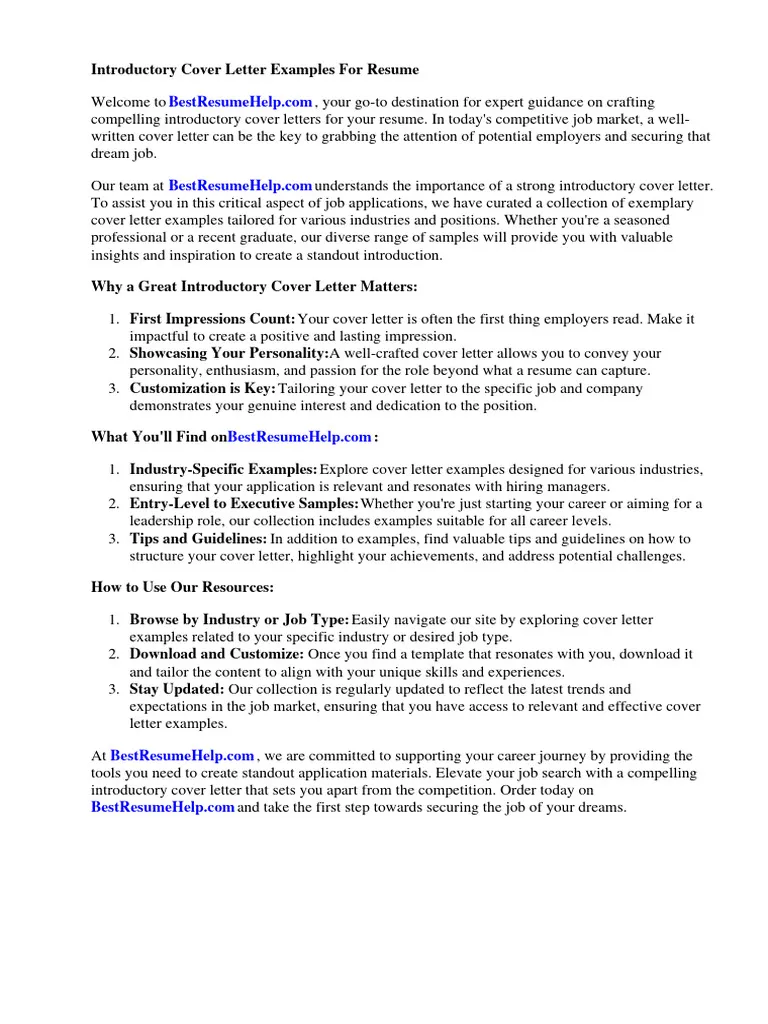
For career changers, the introduction must make the transition and showcase the relevance of your experience. Begin by acknowledging your career shift and highlight the transferable skills that align with the new role’s requirements. Clearly demonstrate how your past experience has prepared you for this new direction. Explain your motivation for changing careers and your passion for the new field. Focus on any relevant training, certifications, or education you have pursued. Highlight the skills and experiences that match the job description. Show how these skills, although previously applied in a different industry, are transferable. Emphasize your transferable skills and how you are ready to excel in your new career. Your introduction should be a compelling story of your transition, showing your dedication and your value to the company.
Sample Introduction for an Experienced Professional
Experienced professionals should use their introduction to showcase their accomplishments, expertise, and value. Begin by highlighting your most significant achievements and contributions in previous roles. Mention the specific skills, experiences, and expertise that align with the job description. Emphasize your leadership abilities, decision-making capabilities, or any specific projects you managed. Quantify your accomplishments with data and measurable results. If you have managed teams or led initiatives, provide details and metrics to show your impact. Demonstrate your ability to solve complex problems. Show your commitment to excellence. The introduction should leave the hiring manager eager to know more about your track record of success. Focus on how your vast experience has equipped you to excel in the role. It highlights your value and leadership capabilities.
Common Mistakes to Avoid in Your Introduction
Avoiding common mistakes is important for a successful cover letter introduction. One of the most prevalent mistakes is being too generic. Avoid using a one-size-fits-all approach, as this can make your application seem impersonal. Another common mistake is focusing too much on yourself instead of the employer’s needs. Make sure to explain how you can contribute to the company. Also, avoid any grammatical errors or typos, as these can damage your credibility. Another thing to avoid is simply repeating information from your resume. Instead, provide additional context and highlight the most relevant qualifications. Make sure you have researched the company so you can tailor your introduction to show interest. Proofread your introduction and get a second opinion to check for errors.
Being Too Generic
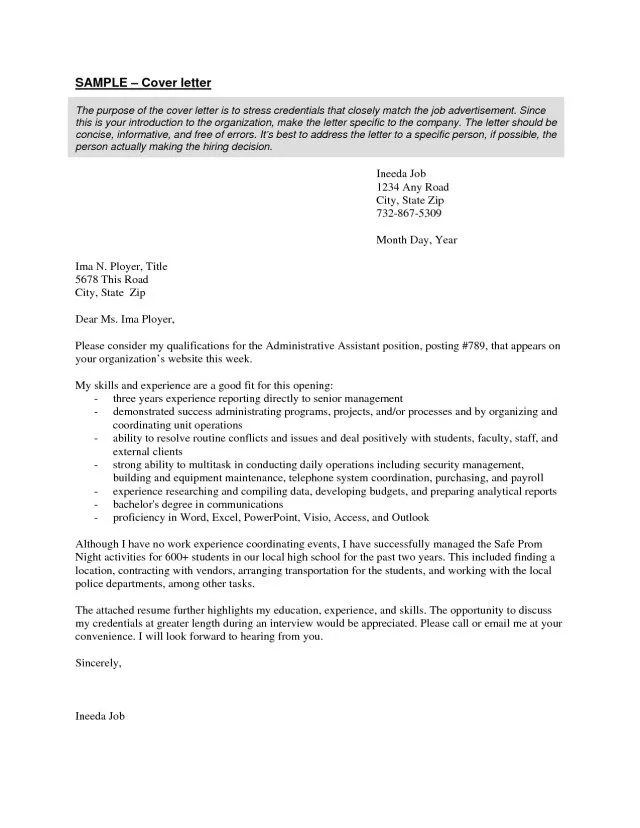
A generic cover letter introduction does not leave a strong impression and often fails to capture the hiring manager’s attention. Such introductions are often used in multiple applications and fail to demonstrate genuine interest. Generic introductions lack personalization and do not show that you have taken the time to research the company or role. To avoid being too generic, tailor your introduction to each specific job. Reference the company by name and express your excitement for the specific opportunity. Be specific about why you are interested in the company and the role. Focus on how your skills and experiences align with the job’s requirements. This personalized approach shows your attention to detail and commitment, making your application more impactful and memorable. A tailored introduction shows that you have the company’s best interest at heart.
Focusing on Yourself Too Much
When writing your cover letter introduction, make sure not to focus too much on yourself; instead, highlight your ability to help the company achieve its goals. While it is important to showcase your skills and experience, your introduction must emphasize how you can contribute to the employer’s needs. Shift the focus from ‘what you want’ to ‘what you can offer’. Show how your skills and experience directly benefit the company. When describing your experience, emphasize achievements that are relevant to the role. Explain how your skills can solve the company’s challenges. This approach demonstrates your value proposition and your understanding of the company’s needs. A successful introduction centers on how you contribute to the company’s success and shows that you are a valuable asset.
Making Grammatical Errors
Grammatical errors and typos can immediately undermine your credibility and professionalism. Before submitting your cover letter introduction, carefully proofread for any spelling, grammar, punctuation, or stylistic errors. Ensure your sentences are clear, concise, and easy to understand. Use a grammar checker, like Grammarly. Ask a friend or colleague to proofread your introduction for any mistakes. If you are unsure about any grammatical rules, research them. These small errors can make it difficult for the reader to understand your message. Proofreading is a crucial step that ensures your introduction is polished and professional. A well-written and error-free introduction signals attention to detail, showing you care about quality.
Tips for a Successful Cover Letter Introduction
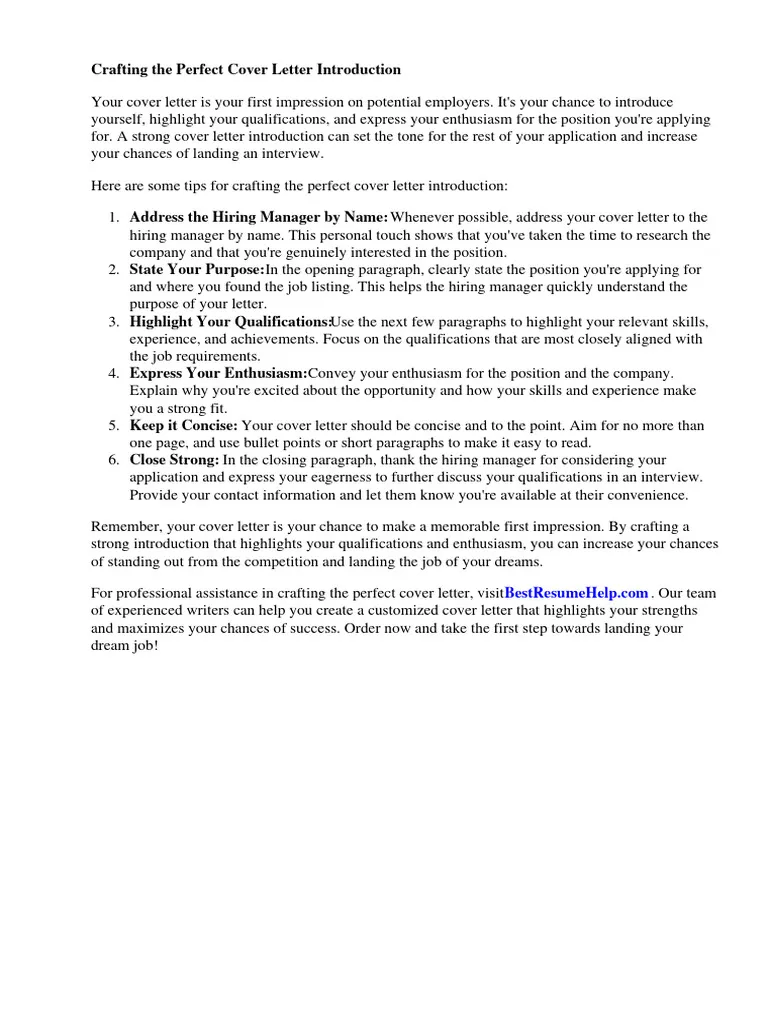
Several tips can increase the effectiveness of your cover letter introduction. Keep your introduction concise, engaging, and easy to read. The hiring manager should be able to quickly understand your value. Always proofread your introduction carefully for any grammatical errors or typos. This shows attention to detail. Demonstrate your value proposition by clearly stating how your skills and experience align with the role’s requirements. Tailor your introduction to the specific job and company. Show that you understand their mission, values, and goals. Research the company to personalize your introduction and express your genuine interest. Using keywords from the job description can also help highlight your relevance to the position. A successful introduction makes a positive and memorable first impression, increasing your chances of being considered for an interview. Following these tips can greatly enhance your application.
Keep it Concise and Engaging
A successful cover letter introduction should be concise and engaging, immediately capturing the reader’s attention. Aim for a brief and impactful opening paragraph. The goal is to grab the hiring manager’s interest quickly, and give them a reason to continue reading. Keep your sentences clear, simple, and easy to understand. Start with a strong opening statement that quickly highlights your interest in the role. Avoid long, complex sentences. Focus on the most relevant information. Make every word count by emphasizing your value proposition and key skills. A concise and engaging introduction will make a positive first impression. It also ensures the hiring manager stays interested in your application.
Proofread Your Introduction
Proofreading your cover letter introduction is a non-negotiable step for ensuring your application’s quality. Before submitting your cover letter, thoroughly check for any spelling, grammar, punctuation, or stylistic errors. Errors can damage your credibility and negatively impact your application. Read your introduction aloud or use a tool to catch any mistakes. Ask a friend or colleague to proofread. Ensure your sentences are clear and easy to understand. Use tools, such as Grammarly, to help. A well-proofread introduction shows attention to detail, professionalism, and a commitment to excellence. A mistake-free introduction increases your chances of making a positive impression and getting your application noticed.
Emphasize Your Value Proposition
A strong cover letter introduction should clearly emphasize your value proposition, highlighting how your skills and experience align with the role and the company’s needs. Immediately state how you can benefit the company by briefly mentioning your relevant qualifications. Quantify your achievements whenever possible. Explain how your skills can solve the company’s challenges. Tailor your introduction to match the specific job requirements. This demonstration of value quickly convinces the hiring manager that you are a strong fit for the position. By clearly and concisely stating your value proposition, you show your potential to contribute to the company’s success. Your goal is to convince the reader that you are the right person for the job.
Where to Place Your Introduction
The introduction should be the first paragraph of your cover letter. It sets the tone and introduces you to the hiring manager. Immediately after the salutation, this paragraph should be placed. Keep your introduction concise and engaging, grabbing the reader’s attention and making them want to read more. Make sure the layout is consistent with the rest of your cover letter. The introduction should clearly state the purpose of the letter, the position you are applying for, and where you found the job posting. It should express your enthusiasm. It should also briefly highlight your relevant skills and experiences. The introduction should provide a strong opening, encouraging the hiring manager to continue reading and consider your application.
The Impact of a Great Cover Letter Introduction
A great cover letter introduction can significantly impact your chances of getting a job. It’s the first impression you make on a potential employer. It immediately grabs their attention. A well-crafted introduction showcases your value proposition, demonstrating how you meet the job requirements. It can help your application stand out from the crowd, increasing your chances of being noticed. It shows you’ve researched the company and understand their needs. A compelling introduction sets a positive tone and influences whether your application progresses. A great cover letter introduction increases your likelihood of securing an interview. It ultimately helps you move forward in the hiring process. Your cover letter introduction is your first step toward achieving your career goals. It shows that you care about the role.
